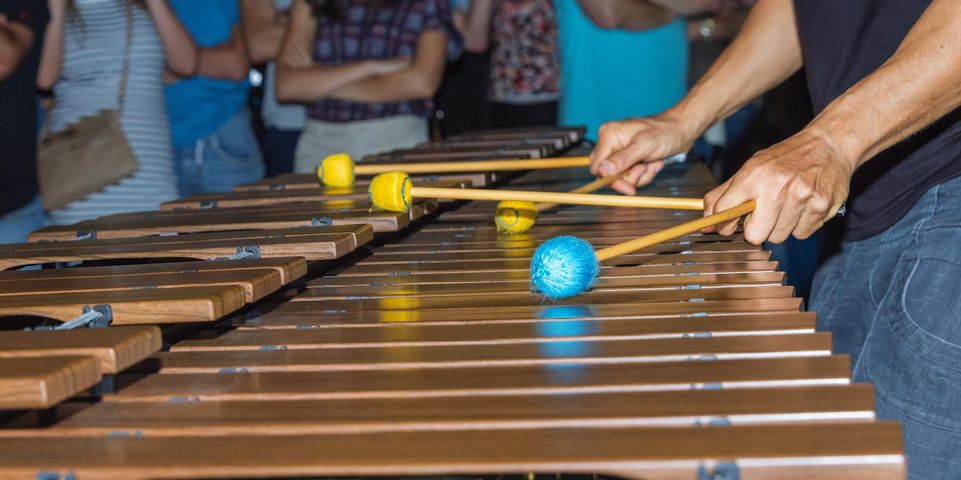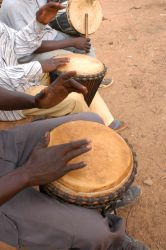An Introduction to African Musical Instruments

Africa’s various musical traditions have shaped and influenced countless genres around the world, encompassing everything from blues and rock to pop and Latin music. When you walk into a music store, you’re surrounded by instruments that either originated from or were influenced by different African cultures. If you’re interested in learning how African tribal artifacts and instruments spread throughout the global music landscape and ultimately influenced many of the sounds you hear in music today, consider the brief overview below.
3 Main Types of African Musical Instruments
1. Idiophones
Some of the most common instruments in Africa fall under the category of idiophones. These can exist as African tribal artifacts or as instruments still played today. These instruments produce sound by vibrating without the aid of a reed, membrane, or string. Examples include the xylophone, which can be struck, and rattles covered in seashells or filled with stones, which are shaken. African musicians also make use of friction idiophones such as notched bamboo. These instruments are scraped against each other to make noise. The African hand piano, also called mbira or sansa, is played by thumbing the strips of wood or metal which are secured to a gourd or another cavernous container.
2. Membraphones
 This category is characterized by instruments that have vibrating membranes. The one you’re likely most familiar with is a drum. Based on the size of the base and how tightly the material is stretched, the membrane may vibrate at different frequencies, allowing musicians to play both melodies and rhythmic patterns. South Africa brought us the ngoma kettledrums, and in West Africa you might see the hourglass-shaped pressure drum. In Burundi, some drums are carved from tree trunks.
This category is characterized by instruments that have vibrating membranes. The one you’re likely most familiar with is a drum. Based on the size of the base and how tightly the material is stretched, the membrane may vibrate at different frequencies, allowing musicians to play both melodies and rhythmic patterns. South Africa brought us the ngoma kettledrums, and in West Africa you might see the hourglass-shaped pressure drum. In Burundi, some drums are carved from tree trunks.
3. Chordophones
These instruments make noise through the vibration of strings, whether they are plucked, played with a bow, or hit into action. It’s widely believed that one of the most common chordophones — musical bows — were originally hunting bows, which were repurposed for entertainment purposes. These instruments are mainly comprised of a long, curved pole and a straight string connected to either end. An earth bow is played by sticking one end of the pole in the ground, bending it, and attaching a stone or wood piece to the string. To play a mouth bow, an African musician would put the string in their mouth and strike the string, as the position of their mouth would dictate the note played.
If you’re interested in learning more about African tribal artifacts and how they’ve shaped our world today, stop by Queen Street Gallery of Martinsburg, WV. This art gallery has been educating and pleasing customers for over 20 years, right from the city’s historic downtown area. In addition to instruments, they offer antique maps, jewelry, sculptures, and a variety of other treasures. To learn more about African tribal artifacts for sale, call (304) 263-9495 today. You can also visit the website to learn more about their unique inventory.
About the Business
Have a question? Ask the experts!
Send your question

